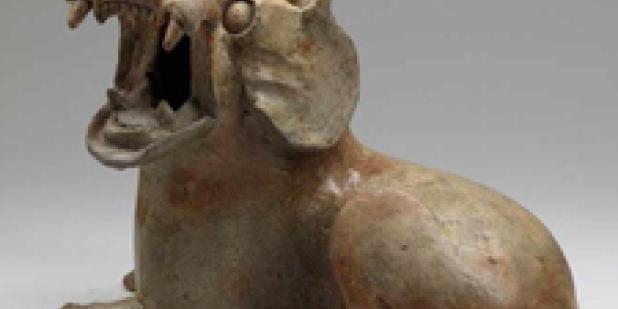Join us for a free one-day workshop for educators at the Japanese American National Museum, hosted by the USC U.S.-China Institute and the National Consortium for Teaching about Asia. This workshop will include a guided tour of the beloved exhibition Common Ground: The Heart of Community, slated to close permanently in January 2025. Following the tour, learn strategies for engaging students in the primary source artifacts, images, and documents found in JANM’s vast collection and discover classroom-ready resources to support teaching and learning about the Japanese American experience.
Comforts for the Soul: Han Dynasty Arts for the Afterlife
The Honolulu Academy of Arts present art work from the Han dynasty (206 B.C.-A.D. 220).
Where

Roughly coinciding with the Roman Empire, the Han dynasty (206 B.C.-A.D. 220) was a pivotal period in Chinese history that significantly shaped China’s cultural identity. Like the ancient Egyptians, the Han-dynasty Chinese had complex beliefs concerning the afterlife. They referred to the tomb as a “subterranean palace” (digong), and filled it with items they believed the soul needed after death. The most striking of these are ceramic and wood sculptures of soldiers, maids, and other servants, including dogs to guard the tomb’s entrance. The tomb walls were decorated with murals, or with designs on ceramic tiles envisioning the afterlife. The Academy is fortunate to have an entire set of tiles that would have served as a tomb archway, decorated with attendants, horses and other figures that preserve some sense of the lost tradition of painting during this early age.
Such objects capture aspects of Han life long buried by the dust of time, from painted designs on sculptures that preserve textile patterns and dress styles, to intricately cast bronze belt hooks and other personal adornments inlaid with gold and silver, to remarkable ceramic models of towers and other buildings that reveal the qualities of Chinese wood-frame architecture centuries before the earliest buildings that still survive.
Featured Articles
Please join us for the Grad Mixer! Hosted by USC Annenberg Office of International Affairs, Enjoy food, drink and conversation with fellow students across USC Annenberg. Graduate students from any field are welcome to join, so it is a great opportunity to meet fellow students with IR/foreign policy-related research topics and interests.
RSVP link: https://forms.gle/1zer188RE9dCS6Ho6
Events
Hosted by USC Annenberg Office of International Affairs, enjoy food, drink and conversation with fellow international students.
Join us for an in-person conversation on Thursday, November 7th at 4pm with author David M. Lampton as he discusses his new book, Living U.S.-China Relations: From Cold War to Cold War. The book examines the history of U.S.-China relations across eight U.S. presidential administrations.




